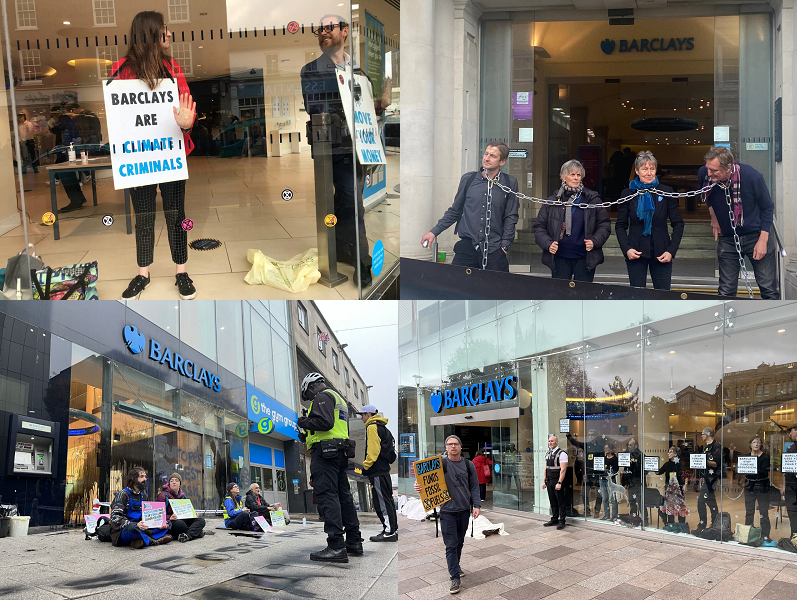On November 14th, Barclays branches all over the UK were subject to protests and demonstrations against the bank’s ongoing role in accelerating the climate crisis. At well over 100 locations, campaigners from Extinction Rebellion and other groups staged interventions ranging from placards and banners outside branches, through ‘clean-up’ operations inside, to protesters gluing-on to windows or chaining themselves to the building. Indicative of the impatience and outrage – shared by many of the bank’s own shareholders – at Barclays’ failure to withdraw quickly from financing the “moral and economic madness” (Guterres) of fossil fuel companies expanding reserves, the peaceful protests involved many arrests, a consequence those involved are prepared to face to expose Barclays’ actions.
Widespread national protests risk just the kind of reputational damage Barclays is concerned about, especially as their scale and visibility increase, with this intervention even larger than that co-ordinated by Greenpeace in 2020. Attempting to minimise this, the very next day Barclays announced the pilot of its ‘Greener Home Reward’ scheme, “offering a cash reward of up to £2,000 to residential mortgage customers that make selected energy efficiency-related home improvements”. Closer scrutiny shows how little net difference this is likely to make to Barclays’ climate impact. BEIS estimated the greenhouse gas emissions from the UK residential sector in 2020 to be around 67 million tonnes carbon dioxide equivalent (MtCO2e). In 2020, Barclays’ financed emissions from its Energy portfolio alone were 78.5 MtCO2e. Barclays plans to reduce this to 47.1 MtCO2e by 2030. Emissions from UK housing are likely to have dropped since 2020, as the proportion of renewable energy supplied has increased, some households have installed energy-saving measures, and even replacing an old gas boiler with a new one improves efficiency, etc. But if we generously assume no change, Barclays scheme would need to be responsible for reducing to zero the emissions of around 70% of UK housing, just to counterbalance the level of Energy emissions it plans still to be financing by 2030. In reality, the reduction in UK residential emissions brought about by the scheme is likely to be vanishingly small, since it requires work to be undertaken by TrustMark-certified contractors, very few of which are available (one of the reasons the government Green Homes Grant scheme was such a failure) plus for most of the categories of improvement, it covers only a small percentage of the overall cost of the work, making the improvements still far out of reach of very many households – who in any case aren’t eligible unless they have a Barclays residential mortgage. Coming straight after a national wave of protests, this kind of sticking-plaster announcement seems a lot like greenwash.
